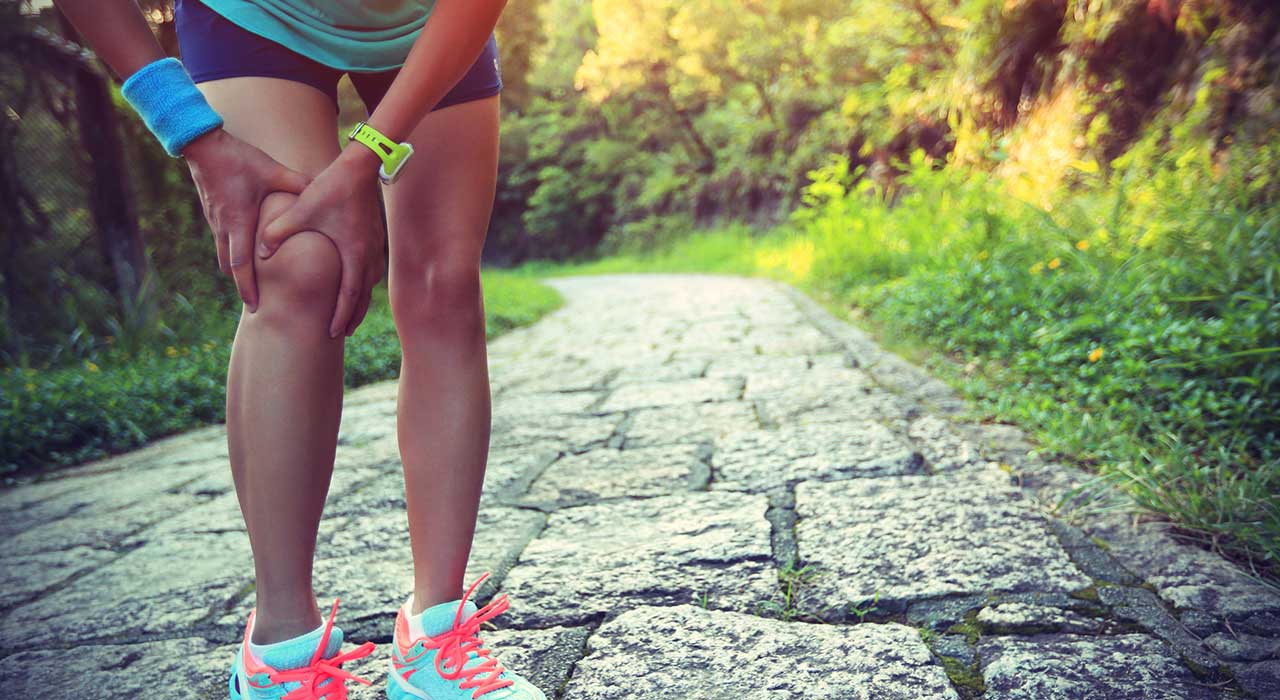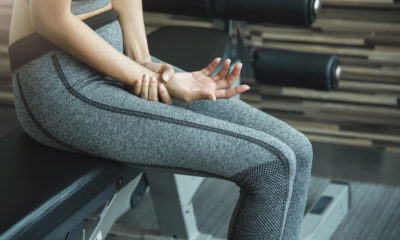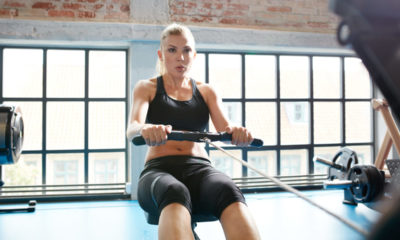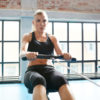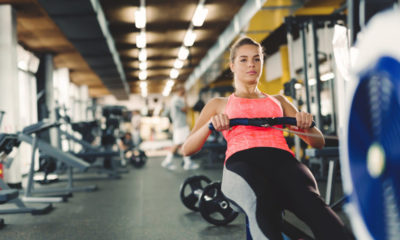Fitness
How To Know If You’ve Injured Your Knee And What To Do About It
Although most fighters will fit in several cardio based sessions per week as well as their gruelling training regime, injuries, thankfully, are a rarity. That aside, the yearly incidence rate for injuries suffered by recreational runners while pounding the pavements or treadmill is between 37 and 56%.
The highest percentage of those occurs at the knee, a joint that’s prone to damage due to its relative instability, either by misalignment or muscular imbalance. Too much, too fast, too quick, poor exercise selection or execution makes the joint vulnerable to overtraining.
The knee gives support to the body and allows propulsion during the gait cycle. Propulsion can be either moving the body in walking/running or acceleration of the movement of the foot rapidly as in kicking.
The stability of the knee joint is due to an array of ligaments connecting the tibia (lower limb) and femur (upper limb). The strong muscles surrounding the joint are activated in response to tensions within the muscles.
The two main ligaments are the ACL (Anterior Cruciate Ligament) which stops unwanted twisting between the two adjoining bones and prevents a forward glide of the tibia on the femur. The other ligament is the PCL (Posterior Cruciate Ligament) which sits behind the knee and also prevents twisting motion and any backwards glide of the tibia upon the femur.
Anterior cruciate ligament and meniscus tear
The two menisci in the knee rest between the thigh bone (femur) and shin bone (tibia) both medially and laterally. The main function of the meniscus is to distribute weight evenly in the leg to prevent damage to the knee joint.
Most common traumatic meniscus tears occur when the knee joint is bent (flexed position) and the knee is then twisted. It is not uncommon for the meniscus tear to coincide with anterior and medial cruciate ligament damage.
Signs to look for include pain along the joint line, locking sensation, generalised ache in the knee or feeling of weakness and insecurity around the knee (a feeling like it will give way). You can expect minimal swelling and a full range of movement with pain only at the end of range.
The ACL can be injured by twisting the knee or because of an impact to the side of the knee, often the outside.
Amazingly a recent study showed 76% of ACL injuries are missed by a primary physician, so it’s important you keep a careful history of any problems you have. Any twisting, cracking, popping, immediate pain, swelling within four hours (usually immediate) and a situation in which you have to stop the initial activity would suggest a cruciate tear until proven otherwise — and recognising the injury can save a career.
The extent of the injury is determined by the degree of damage to the ligament. If the ligament has been stretched and not torn there will be a minimal amount of swelling. In order to diagnose correctly there are questions that need to be addressed:
1. What was the activity? Has activity changed or increased?
2. What was the force? Was it due to a fall or a takedown?
3. What happened to the knee? If it was twisted then either of the cruciate ligaments or the meniscus will most likely have been affected.
4. Was the knee hyperextended or flexed? If it was then it’s more often a muscular issue, although occasionally it could have affected the ACL.
5. Did it swell? When? A watershed of four hours divides cruciate injury from meniscus and ligament injury which normally takes four hours or more.
6. Did you have to stop immediately? If so, this could be the result of a cruciate Injury or occasionally a fracture of the tibia.
7. Did you hear anything such as the pops and cracks that are common in cruciate injury?
8. Was there pain? When? Within four hours divides cruciate injury from meniscus and ligament injury which normally takes four hours or more.
Patellofemoral pain – runner’s knee
Damage to the knee accounts for more than half of all sports injuries and is often the result of individual quadricep muscle weakness, tightness of other related muscle groups, imbalances around the knee and quite often poor footwear choices.
Other causes include a weakness in the VMO (vastus medialis obliquus), a muscle that plays a key role in stabilising the patella, and allows the quads to work effectively. Weakness in this muscle can lead to maltracking which can cause anterior knee pain and tension in the iliotibial band as a result of an imbalance, and this can go as high as the gluteus medius/minimus.
Exercise, excessive bending, pain when contracting the quadriceps and pain during weight bearing are all signs of patellofemoral pain.
Knee injuries can be split into acute or overuse injuries. Acute can be caused by trauma and normally involves an improper balance between strength and mobility of muscles’ components, ligament strength and the forces put through them.
Overuse injuries are caused by repetitive movements and triggered biomechanical factors tend to be the underlying problem. Acute injuries, in which the foot is fixed during a fall or when excessive force is applied during a twist, can cause structures of the knee to become severely damaged.
Immediate treatment for all of the above injuries is recommended by initially following the procedure below, which is aptly labelled P.R.I.C.E.
P – Protect
Protect yourself from any further damage to the area by stopping the activity. If the injury isn’t too severe, it may only require taping.
R – Rest
The first 48 hours following an occurrence is when severe swelling and bleeding around the Injury is at its maximum. Seek alternative activities and/or take complete rest to reduce any further pain. Depending on the severity of the injury immobilisation is not usually necessary, and can be potentially harmful to the repair process and outcome.
I – Ice
The application of ice cools the damaged tissue by contracting the blood vessels. This will prevent any further swelling and bleeding, allowing the healing process to start. The applications should be frequent, but each application should be for no more than 15 minutes at a time.
Once any swelling has subsided – usually 48-72 hours after the initial occurrence – heat is then generally applied to chronic injuries that have no inflammation as it increases circulation and raises skin temperature. Sore, stiff, nagging muscle or joint pain is ideal for the use of heat therapy.
C- Compression
Apply compression to the affected area, no matter how gentle, as it will prevent and control the extent of swelling.
E- Elevation
By elevating the affected area above heart level, swelling should drain away. This is crucial within the initial 48 hours.
Find fitness advice and more in every issue of TRAIN for HER magazine.


